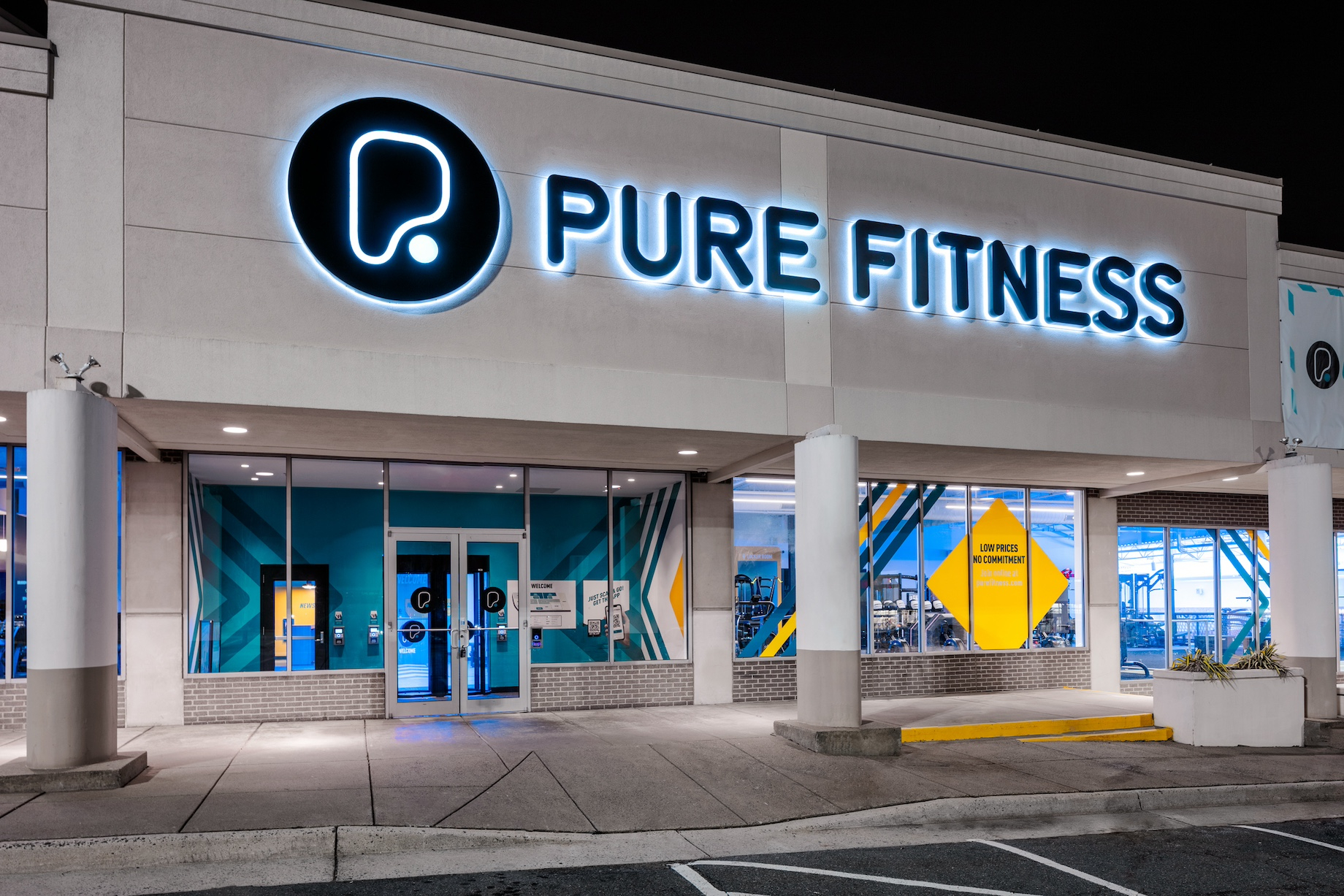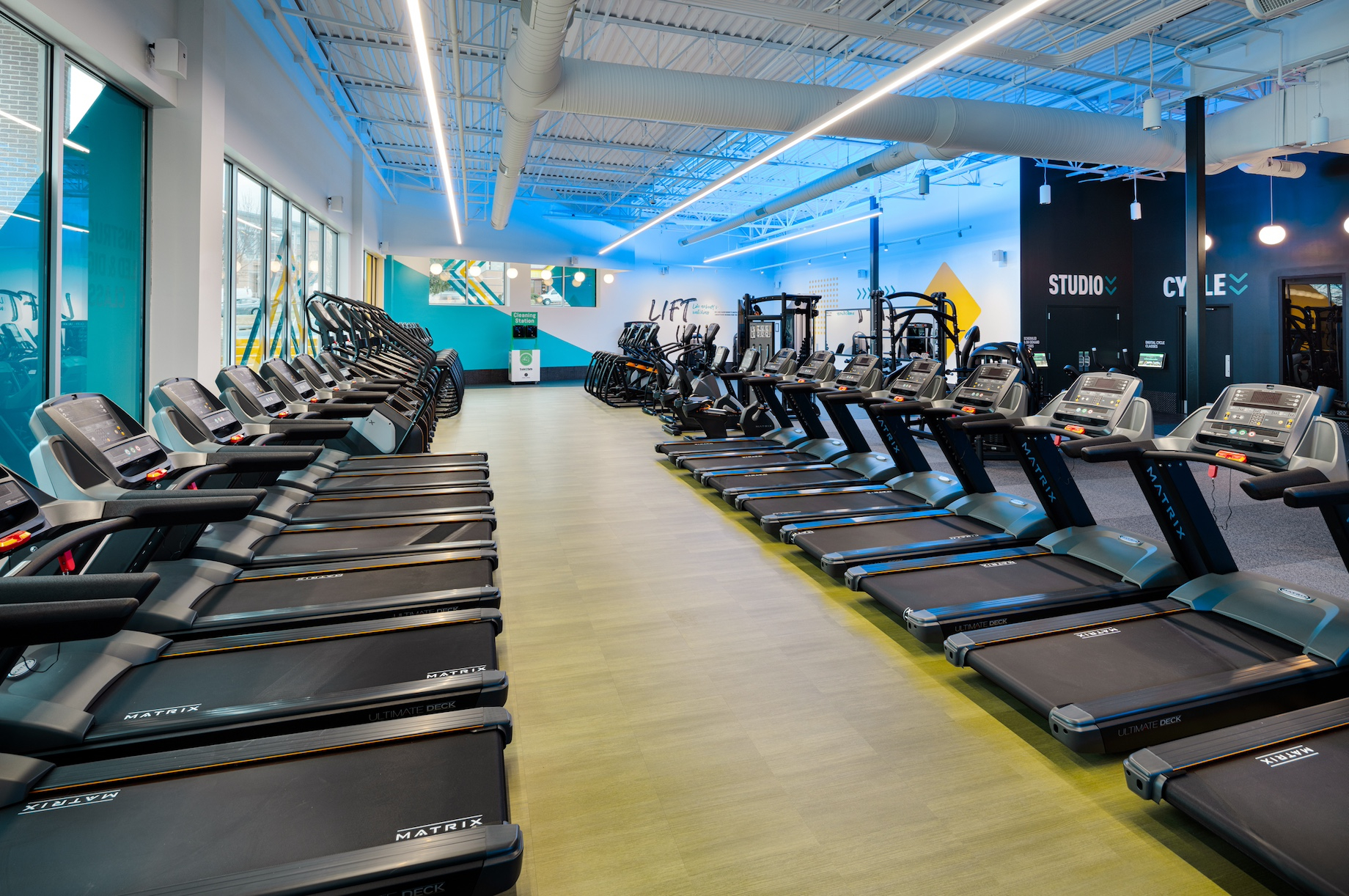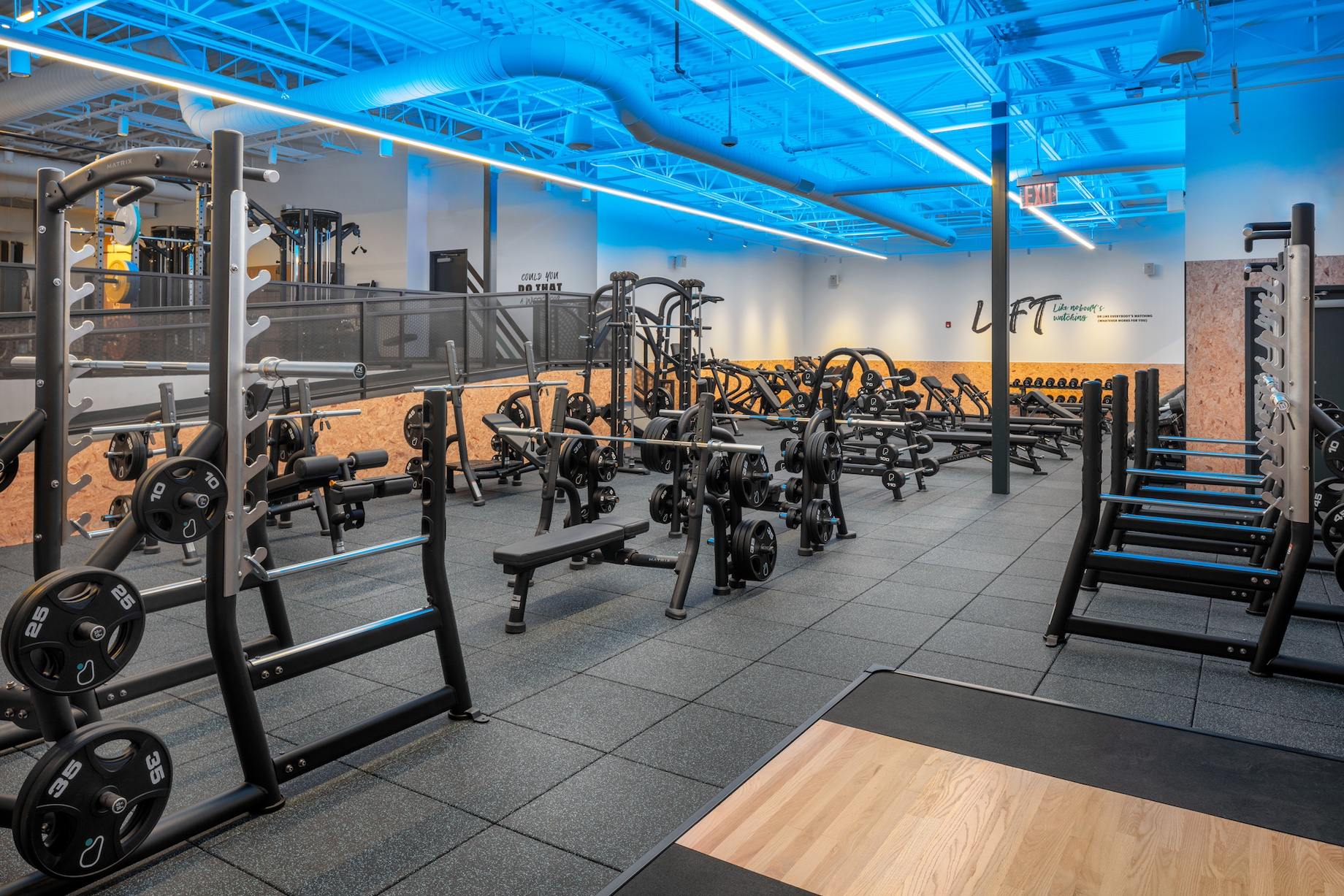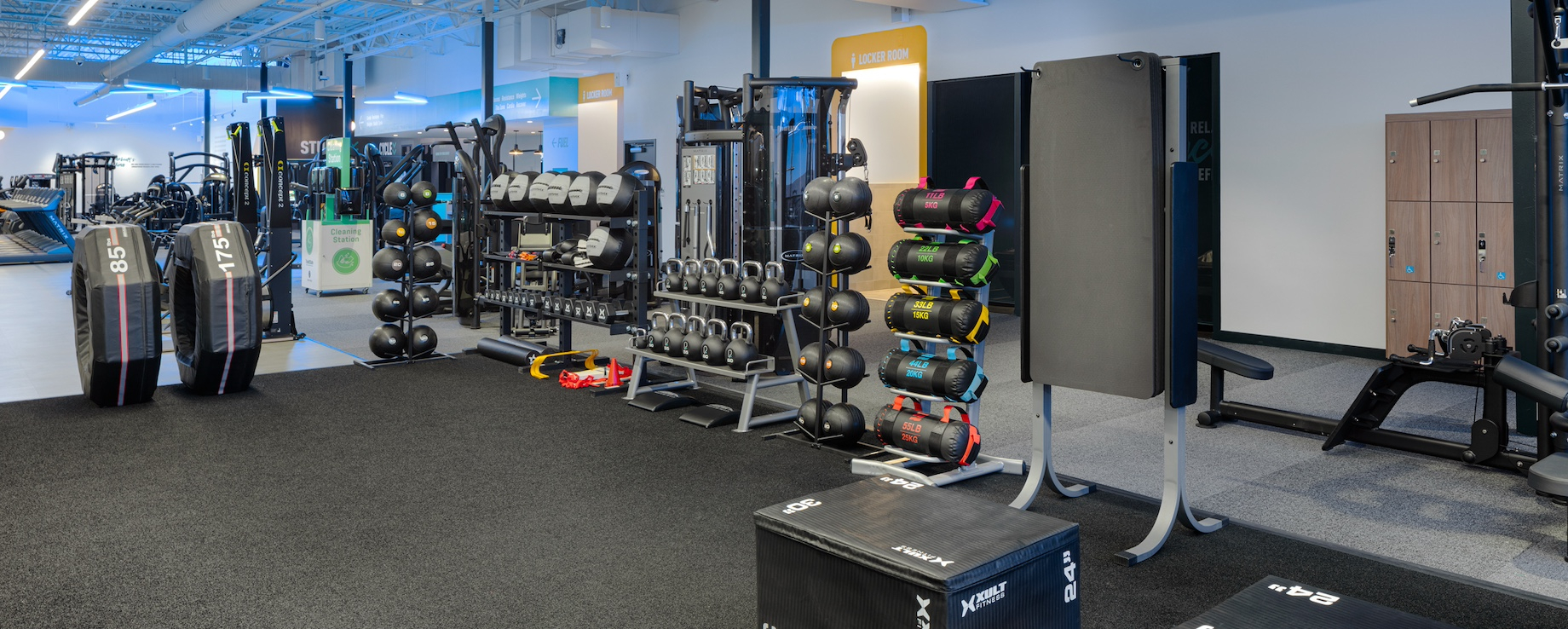PureGym, whose nearly 600 value-oriented gyms serve more than 1.9 million members across Europe and Middle East, has decided to bulk up its North American presence. The U.K. company is looking to partner with franchisees to open multiple units in the U.S. and Canada.
The decision to stretch out in the U.S. makes sense given the fact that PureGym’s majority private equity shareholder, Leonard Green & Partners, is based in the States, said James Hathaway, group international strategy and franchising director at PureGym. After the company opened three pilot sites in the Baltimore-Washington, D.C., area in 2022 to familiarize itself with the market, it determined it could offer U.S. consumers a differentiated value proposition.

Pure Gym opened three gyms in the Baltimore-Washington, D.C., region in 2022, including this location near the Greensboro Metro station in Tysons, Virginia. The group is looking to expand the brand, known as Pure Fitness in the U.S., across several states through master franchise agreements.
“It’s a very mature market, but only one in four Americans have a gym membership, so clearly there’s an opportunity to increase that,” he stated. “We’ve proven the model in other markets, and we’ve been pleased with the progress we’ve made in the U.S.”
More Tech, Less Sales Staff
Branded as Pure Fitness in North America, the company is wagering that its digital platform will give it an edge in a competitive field. People join online and can use the club’s app to access the gym, sign up for fitness classes, determine how busy a location is and select from hundreds of available workout routines, among other actions. Members also can use the technology to cancel their memberships and, depending on their membership level, freeze it for a period. By comparison, Hathaway pointed out, most conventional gyms still require in-person sign-ups and cancellations.
Not only does the technology put control of membership into the hands of patrons, it also allows the company to run a lean operation and thus provide a lower price point. Typically, Pure Fitness hires two full-time staffers to run a gym and a part-time person who supports the staff and can train members during the off hours by paying rent to the gym, Hathaway explained. The concept also includes digital studios that provide on-demand and scheduled classes with virtual instructors. “We have people who provide service at the gyms, but we don’t have a sales staff that is selling in the gym, which I think still happens a lot in U.S.,” he stated. “Our value proposition is the flexibility of our memberships. We don’t lock people into a contract, so they can join and leave as easily as they want.”
Currently, PureFitness offers three membership categories that include joining and annual maintenance fees. The lowest is $9.99 per month and limits access to off-peak hours, while the highest is $30.99 per month and provides benefits like access to multiple gyms and unlimited instructor-led classes. Members can choose to pay for six or 12 months in advance to avoid the joining and maintenance fees. Hathaway claimed its U.S. competitors charge an estimated $50 per month.
The low price points and digital platform tend to attract a younger clientele that’s naturally more tech savvy, Hathaway said. The average member age is about 30 in the U.S. and a little bit younger in the U.K., he continued, although a broad cross-section of consumers with varying fitness goals comprises its overall customer roster. “Pure Fitness is what you’d call a high-value, low-cost proposition,” added Moe Puri, vice president at RCS Real Estate Advisors, which is aiding the expansion. “The tech is really what sets it apart from other operators, and it just seems like it’s the right time and right place for what they’re offering.”
Growth and Ownership History
PureGym was founded in 2008 by entrepreneur Peter Roberts, who opened 51 gyms across the U.K. before selling to CCMP Capital Advisors in 2013. When Leonard Green acquired a majority stake in the company in late 2017, PureGym had built a portfolio of nearly 200 operations through acquisitions and organic growth. Its membership topped 1 million soon after.
PureGym then completed a 360 million-pound bond offering, equal to $457 million in today’s U.S. dollars. Its expansion over the following couple years culminated with acquisitions in Denmark and Switzerland, making it the second-largest fitness operator in Europe just before COVID lockdowns. Leonard Green injected 100 million pounds amid the closure of U.K. gyms, and the company raised 490 million euros in a bond issuance, equal to $532 million in today’s U.S. dollars. In 2021, KKR acquired an interest in PureGym for 300 million pounds. Around the same time, PureGym launched its franchise model in Saudi Arabia and United Arab Emirates.
In its Sept. 30, 2023, financial disclosure, PureGym stated that it had refinanced its external debt and that it had a “robust capital and liquidity position” of some 571 pounds, or $725 million, available to fund its expansion. “We’ve been pleased with the way we’ve rebounded from COVID,” Hathaway said. “Our site performance has been good across the group. We went into the pandemic in a very good position and have been well supported.”
North America Plans
As it begins its lift in North America, Pure Fitness aims to open as many as 300 gyms in the U.S. over the next five years. While it’s open to opportunities anywhere, Pure Fitness has identified 10 states as likely initial targets: New York, New Jersey, Massachusetts, Missouri, Illinois, Texas, Georgia, Florida and the Carolinas. The company’s sweet spot is 12,000 to 15,000 square feet to serve 4,000 members, though it will open gyms as small as 7,000 square feet, Hathaway said.

The Tysons, Virginia, Pure Fitness offers more than 70 pieces of cardio equipment …

… and more than 80 pieces of strength equipment.
Ideally, the company wants locations that capture a critical population mass within 15 minutes of travel time, he revealed. And because many of its operations are open 24 hours, Pure Fitness is leaning toward power centers that have longer tenant hours and plenty of parking. Puri thinks Pure Fitness also could be well-suited for malls and possibly lifestyle centers. Additionally, the company is happy to take basement or upper-floor locations. “We’ve got nearly 40 sites in the U.K. that are two or three floors up or down, but they’re in very good locations,” Hathaway remarked. “People go to gyms for a specific reason. They’re not like other retail uses where you just don’t want subprime footage.”

A turf area provides members with a variety of equipment, from tires to kettlebells.
Franchisee Profile
PureGym is concentrating on franchisees that have experience operating multiple units because it’s more likely that they are already in business with other brands and have the necessary business infrastructure, Hathaway said. PureGym provides a “collaborative model” that helps franchisees drive membership, among other assistance. “We have a slightly high capital investment, but we put our whole ecosystem behind it: the support, the training and technology,” he added. “The advantage we’ve got right now is that we’ve got good availability.”
Puri anticipates the first Pure Fitness locations will open by the end of the year.
He also suggested that, thanks to the company’s tech, its expansion could be reminiscent of the category-killer era. “Health-and-wellness continues to be a big category for the landlords right now — everybody wants it — and the smart franchisees are always looking to diversify their portfolios,” said Puri, who has worked with Hathaway on other deals in the past. “It’s a very crowded space, but I see these guys coming in with something so different that they could own the category.”
By Joe Gose
Contributor, Commerce + Communities Today